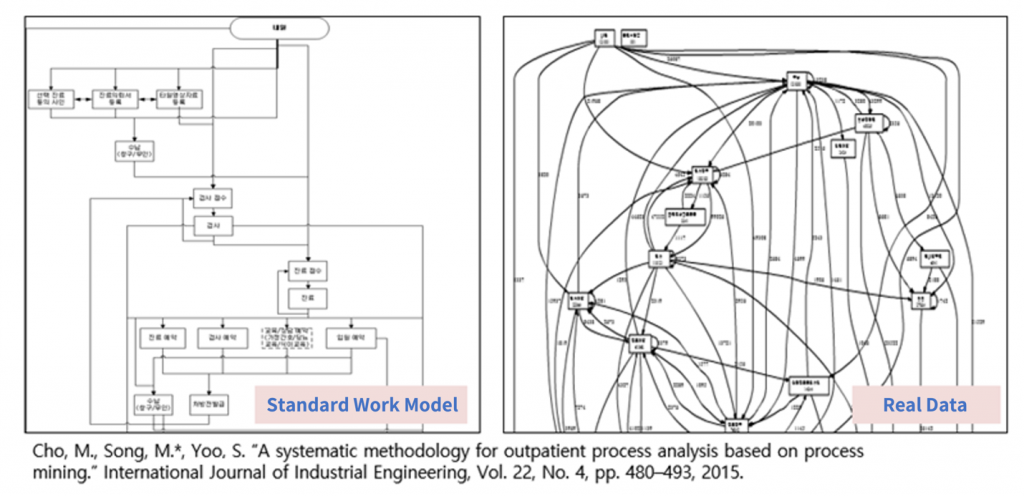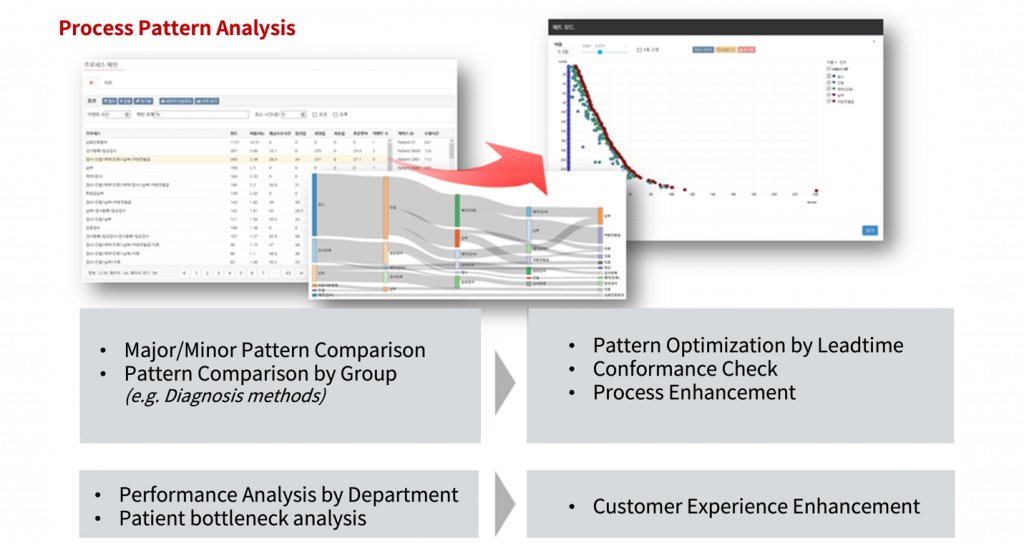When hospitals seek efficiency through process mining.
Aug 21, 2017 | 3 min read
Why hospitals need Process Mining
Data-driven process analysis, known as process mining, is gaining more attention in the era of big data. It’s a powerful framework for analyzing any task flow, including in the public sector, procurement, and logistics.
Process mining visualizes the current task flow through a Process Map. It derives lead time and bottlenecks through Performance Analysis, expresses the relationship between resources with Social Network, and analyzes the sequence pattern of tasks. Moreover, it grasps the distribution of event logs within a case through a dotted chart. This approach provides a comprehensive understanding and analysis from multiple perspectives.
Outpatient Process revealed.
Activities like patient registration, medical consultation, diagnosis, and payment within the hospital are stored in the hospital information system (HIS) database. Can we improve patient satisfaction and hospital efficiency based on this data? We responded to this question with process mining.
Below are the results from applying process mining to the outpatient process of a hospital, comparing the standard and actual processes for conformance. We found about 90% conformance and recognized the need for a detailed analysis of the 10% violation.

Various process mining techniques can be applied in different hospital scenarios:
– Visualizing patient flow within the hospital.
– Analyzing task patterns by patient type or diagnosis.
– Workload analysis and resource distribution analysis.
Based on event log analysis, we can create a simulation model and predict changes if the number of patients increases or staff assignments change. For example, if the hospital uses kiosks, we can determine the optimal number to utilize.

Additionally, social network analysis in process mining helps understand interactions between departments within an organization. In a previous study, the hospital’s departmental social network was analyzed as follows:

Process Mining in Healthcare – A Case Study, R.S. Mans, M.H. Schonenberg, M. Song, W.M.P. van der Aalst
We learned that the ‘General Clinical Chemical Lab’ interacts with several departments. In contrast, there was little to no interaction between OC Obst/Gyn and OC for Cardio and Vascular Disorder. This indicates that the two departments either do not interact or do so very infrequently. The study mentioned that the hospital was unaware of these interaction patterns until they utilized process mining. Knowing precisely how each department operates can be beneficial in many ways.
Explore various data visualizations and analyses using Process Mining. It will greatly aid in understanding process phenomena. Also, digitizing organizational processes and archiving process patterns can serve as valuable data for future predictions and optimizations.
